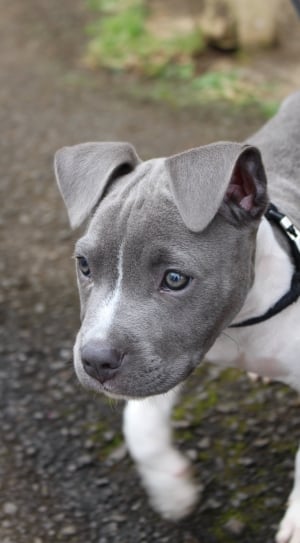

It is likely that that the vast majority of pit bull type dogs in our communities today are the result of random breeding-two dogs being mated without regard to the behavioral traits being passed on to their offspring. Research on pet dogs confirms that dog aggressive dogs are no more likely to direct aggression toward people than dogs that aren’t aggressive to other dogs. Any dog that behaved aggressively toward a person was culled, or killed, to avoid passing on such an undesirable trait. Dogs used for fighting needed to be routinely handled by people therefore aggression toward people was not tolerated. And even those pit bulls bred to fight other animals were not prone to aggressiveness toward people. These dogs have long been popular family pets, noted for their gentleness, affection and loyalty. Other pit bulls were specifically bred for work and companionship. It doesn’t mean that they can’t be around other dogs or that they’re unpredictably aggressive. That means that they may be more likely than other breeds to fight with dogs. Some pit bulls were selected and bred for their fighting ability. These larger, slower bull-baiting dogs were crossed with smaller, quicker terriers to produce a more agile and athletic dog for fighting other dogs. When baiting large animals was outlawed in the 1800s, people turned instead to fighting their dogs against each other. Today’s pit bull is a descendant of the original English bull-baiting dog-a dog that was bred to bite and hold bulls, bears and other large animals around the face and head. For example, certain strains of Golden Retrievers are now being bred as service dogs, a far cry from their original job of retrieving downed birds. It’s also important to note that some dog breeds are now bred for entirely different jobs than those for which they were originally developed. However, while a dog’s genetics may predispose it to perform certain behaviors, tremendous behavioral variation exists among individuals of the same breed or breed type.

Pointers are more likely than Poodles to point, and sheepdogs are more likely than lapdogs to herd. It’s not surprising that individuals of a specific breed tend to look and behave somewhat similarly. A well-bred dog should have both the physical attributes necessary to perform its job and the behavioral tendencies needed to learn it. Physical abilities and behavior are both important facets of any breed. When developing a breed, breeders selected only those dogs that performed their job best to produce the next generation. Each breed was developed to perform a specific job, whether that job is hunting rabbits, retrieving downed birds, herding livestock or sitting on people’s laps. Dog breeds are characterized by certain physical and behavioral traits.


 0 kommentar(er)
0 kommentar(er)
